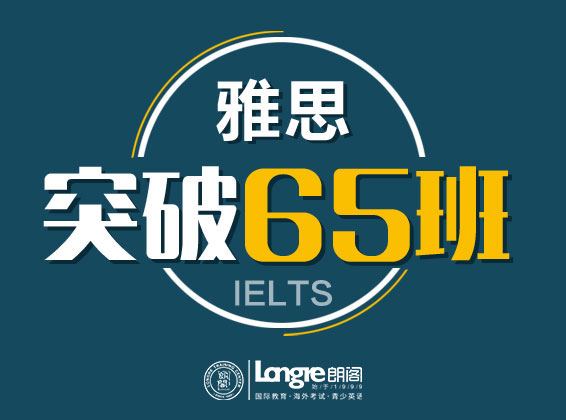|
今天和南京朗阁小编一起回顾一下2020年8月8日雅思阅读考题,如果需要专项学习的同学可以在线咨询哦。 P1 桥梁监测 P2 陨石湖底回声探测 P3 希腊古语研究 朗阁名师刘艳艳点评 1.本场考试的难度总体稍难,passage 1就出现了配对题,填空题仅占3题,总体上增加了做题的难度 2. 整体分析:涉及科技类(P1/P2)、语言类(P3)。 Passage 1的题型组合为:单选+填空+段落细节配对,难度中等。Passage 2 和3两篇文章在理解上难度较大 3. 部分答案及参考文章: PASSAGE 1 题型组合:单选+填空+段落细节配对 难易度:中等 参考答案及原文: Keep a watchful eye on the bridges A. Most road and rail bridges are only inspected visually, if at all. Every few months, engineers have to clamber over the structure in an attempt to find problems before the bridge shows obvious signs of damage. Technologies developed at Los Alamos National Laboratory, New Mexico, and Texas A&M University may replace these surveys with microwave sensors that constantly monitor the condition of bridges. B. ” The device uses microwaves to measure the distance between the sensor and the bridge, much like radar does,” says Albert Migliori, a Los Alamos physicist “Any load on the bridge – such as traffic – induces displacements, which change that distance as the bridge moves up and down.” By monitoring these movements over several minutes, the researchers can find out how the bridge resonates. Changes in its behavior can give an early warning of damage. C. The Interstate 40 bridge over the Rio Grande river in Albuquerque provided the researchers with a rare opportunity to text their ideas. Chuck Farrar, an engineer at Los Alamos, explains: “The New Mexico authorities decided to raze this bridge and replace it. We were able to mount instruments on it, test it under various load conditions and even inflict damage just before it was demolished.” In the 1960s and 1970s, 2500 similar bridges were built in the US. They have two steel girders supporting the load in each section. Highway experts know that this design is “fracture critical” because a failure in either girder would cause the bridge to fail. D. After setting up the microwave dish on the ground below the bridge, the Los Alamos team installed conventional accelerometers at several points along the span to measure its motion. They then tested the bridge while traffic roared across it and while subjecting it to pounding from a “shaker”, which delivered precise punches to a specific point on the road. E. ―We then created damage that we hoped would simulate fatigue cracks that can occur in steel girders,‖ says Farrar. They first cut a slot about 60 centimeters long in the middle of one girder. They then extended the cut until it reached the bottom of the girder and finally they cut across the flange – the bottom of the girder‘s “I” shape. F. The initial, crude analysis of the bridge‘s behavior, based on the frequency at which the bridge resonates, did not indicate that anything was wrong until the flange was damaged. But later the data were reanalyzed with algorithms that took into account changes in the mode shapes of the structure – shapes that the structure takes on when excited at a particular frequency. These more sophisticated algorithms, which were developed by Norris Stubbs at Texas A&M University, successfully identified and located the damage caused by the initial cut. G. “When any structure vibrates, the energy is distributed throughout with some points not moving, while others vibrate strongly at various frequencies,” says Stubbs. “My algorithms use pattern recognition to detect changes in the distribution of this energy.” NASA already uses Stubbs‘ method to check the behavior of the body flap that slows space shuttles down after they land. H. A commercial system based on the Los Alamos hardware is now available, complete with the Stubbs algorithms, from the Quatro Corporation in Albuquerque for about $100,000. Tim Darling, another Los Alamos physicist working on the microwave interferometer with Migliori, says that as the electronics become cheaper, a microwave inspection system will eventually be applied to most large bridges in the US. “In a decade I would like to see a battery or solar-powered package mounted under each bridge, scanning it every day to detect changes,” he says. Questions 1 – 4 Choose the correct letter, A, B, C or D. Write your answers in boxes 1-4 on your answer sheet. 1 How did the traditional way to prevent damage of the bridges before the invention of new monitoring system. A Bridges has to be tested in every movement on two points. B Bridges has to be closely monitored by microwave devices. C Bridges has already been monitored by sensors. D Bridges has to be frequently inspected by professional workers with naked eyes. 2 How does the new microwave monitors find out the problems of bridges. A by changeling the distance between the positions of devices B by controlling the traffic flow on the bridges C by monitoring the distance caused by traffic between two points D by displacement of the several critical parts in the bridges 3 Why did the expert believe there is a problem for the design called “fracture critical“ A Engineers failed to apply the newly developed construction materials. B There was not enough finance to repair the bridges. C The supporting parts of the bridges may crack and cause the bridge to fail. D There was bigger traffic load conditions than the designers had anticipated. 4 Defect was not recognized by a basic method in the beginning. A until the mid of faces of bridges has fractures. B until the damage appears along and down to the flanges. C until the points on the road have been punched. D until the frequency of resonates appears disordered. Questions 5 – 8 Filling the blanks in the diagram labels. Write the correct answer in boxes 5 – 8 on your answer sheet.

Questions 9 – 13 The reading Passage has seven paragraphs, A – H. Which paragraph contains the following information? Write the correct letter, A – H, in boxes 9 – 13 on your answer sheet. 9 how is the pressure that they have many a great chance to test bridges 10 a ten-year positive change for microwave device 11 the chance they get a honorable contract 12 explanation of the mechanism for the new microwave monitoring to work 13 how is the damage deliberately created by the researchers 参考答案: 1 D 2 C 3 C 4 B 5 microwave 6 accelerometers 7 steel girders 8 flange 9 C 10 H 11 F 12B 13 E PASSAGE 2 答案及参考原文待补充 PASSAGE 3 参考答案及原文待补充 考试预测 1. 本场考试整体偏难,主要是Passage 2和3两篇文章在理解上难度较大,导致很多考生做到最后一篇文章时就只剩下了10分钟左右,来不及做完。Passage 1重复往年旧题,题型组合上为单选+填空+段落细节配对,难度比passage 1常规的填空+判断要大一些。考生备考时,建议尽可能找准每一道题的考点,有目的的回原文找取有效信息,不需要逐字逐句精准理解,并且在阅读过程中要练习对于逻辑关系的分析,不能单纯靠同义转换。重点训练题型为判断/选择/段落细节配对,其他一些题型务必要理清题型特点,考虑全面做题注意事项 2. 下场考试的话题可能有关科技类,教育类和生物类。 3. 重点浏览2015和2018年机经。 (责任编辑:jasmine) |
文中图片素材来源网络,如有侵权请联系删除







